From our co-founder’s desk: The origin, weaknesses, and (brighter) future of template-based ads

Vinay Jain
Feb 7, 2024

Today’s small and medium-sized businesses (SMBs) are constantly looking for tools and strategies to drive more customers to their business through paid social media - largely through Meta Ads. But they are hampered by the time and cost required to produce, test, and iterate unique, on-brand ad creatives. Often times, they turn to template-based solutions to streamline their process.
But, template-based ads are a tradeoff between speed/cost benefits and ad performance. They are quick and cheap to produce, but sacrifice performance, branding, and the ability to iterate the ad creatives.
Why, then, are template-based ad tools so popular?
In this piece, I unpack the history, benefits, and weaknesses of template ads.
Enter the scene: Facebook's Video Ads
In 2014, Facebook launched their Video Ads platform to much fanfare. At the time, Video Ads were a big ticket ad format that was limited to select partners with enormous budgets.
Facebook Video Ads promised and delivered high engagement, traffic, and conversions, outperforming even the giants like YouTube in certain aspects. This innovation came at a time when organic video consumption on NewsFeed was skyrocketing, and helped Facebook kick off a monetization push over the course of the coming decade.
At the same time, SMB upstarts like AllBirds were making a name for themselves, keen on leveraging Facebook's promising ROAS. However, the complexity and cost challenges of creating video ad campaigns left AllBirds (as well as most SMBs) in the lurch, unable to tap into this lucrative Facebook ad format.
To address this gap, a nimble swat team within Facebook introduced “Slideshow” — a revolutionary ad format that enabled the swift creation of video content from static images. This became a game-changer for SMBs, leveling the playing field and offering a glimpse into the potential of ad templates.
The rise of Facebook Slideshow and ad templates
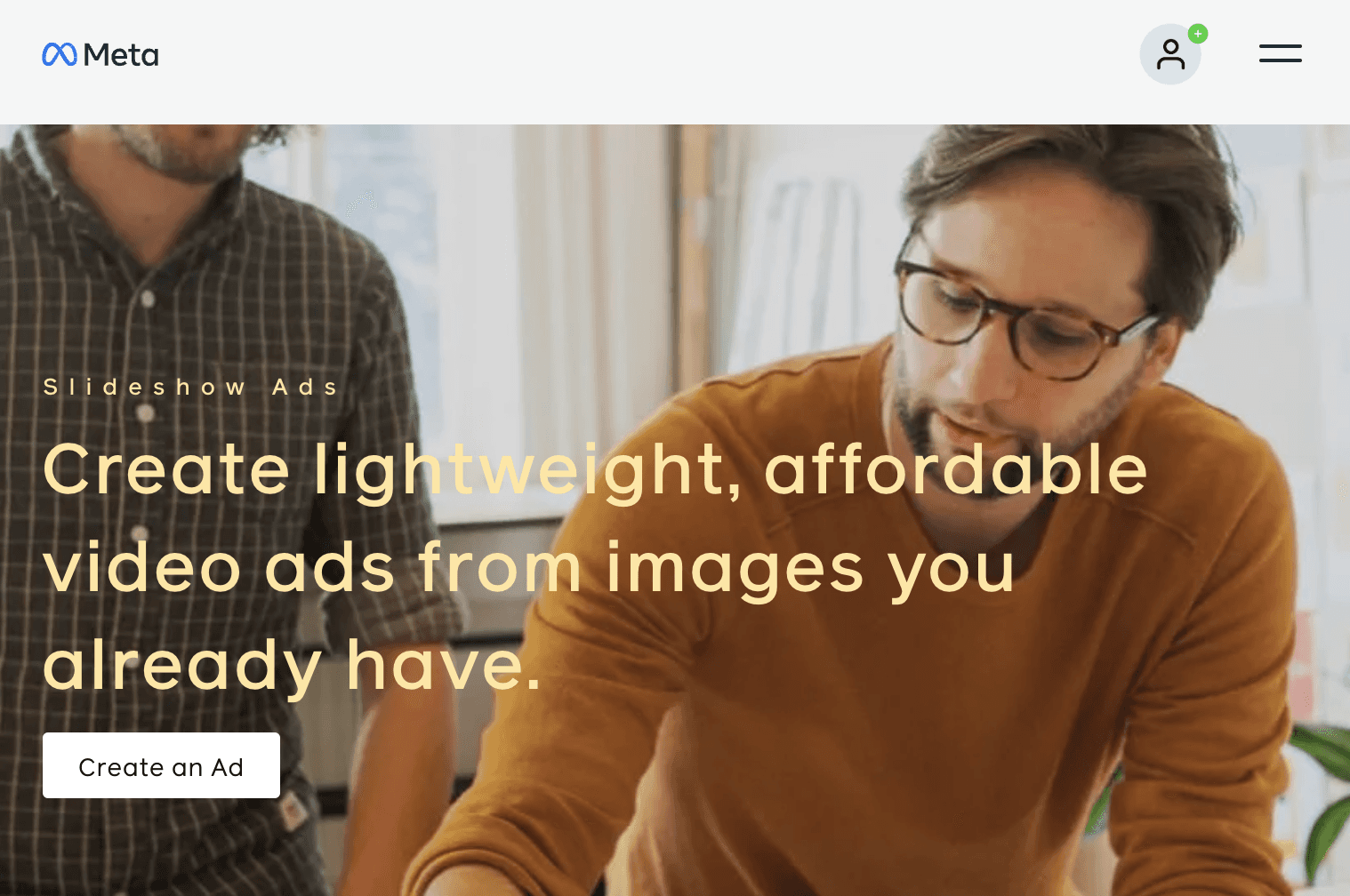
Slideshow simplified video ad creation, significantly lowering the entry barrier for SMBs to engage in video marketing by converting static images into captivating video content.
This concept of taking existing static images and editing them in a lightweight design tool has evolved into it’s own category of tools called “ad templates”. Through its evolution, template-based ad tools have grown in popularity — offering a blend of creativity and efficiency that allows advertisers to quickly and cheaply create ad creatives.
In fact, the popularity of ad templates helped platforms like Canva, which boasts an ever-expanding library of 400,000+ templates, grow at an impressive pace.
The dawn of simplified workflows
The process of producing template-based ads is straightforward and efficient. This is what a typical workflow looks like for a Canva user:
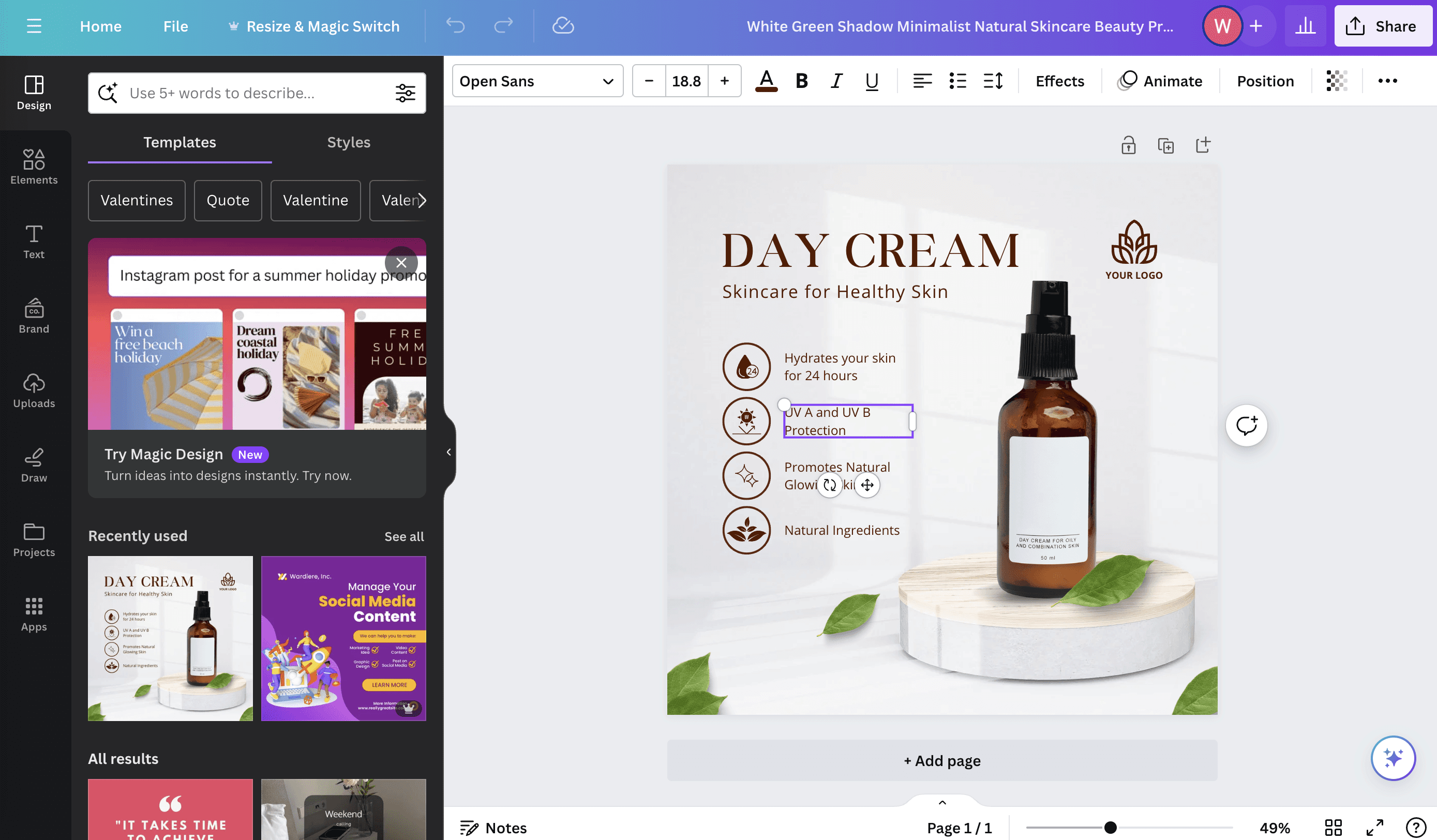
Select a template that aligns with your campaign goals.
Upload your visual assets.
Make necessary edits to tailor the message and aesthetic.
Export the final images.
Launch your ad campaign across desired platforms.
The value proposition is clear. Make ads faster, cheaper, and with a much lower creative barrier to entry. This streamlined approach to producing ad creatives kicked off a paradigm shift that I can confidently say is not going away.
Why SMBs gravitate toward ad templates
They eliminate the need for professional designers and creative strategists. The option to utilize existing images or freely available stock photos further reduces costs and time required to produce an ad creative.
This isn’t just my opinion, either. My team’s extensive user research has netted some great insights into challenges and opportunities that lie at the intersection of ad creative production and AI.
Real SMB marketers confirm time and time again that speed and cost are high priorities:
It’s fast and easy to go from zero to concept

Much lower cost to produce ad creatives using template-based tools
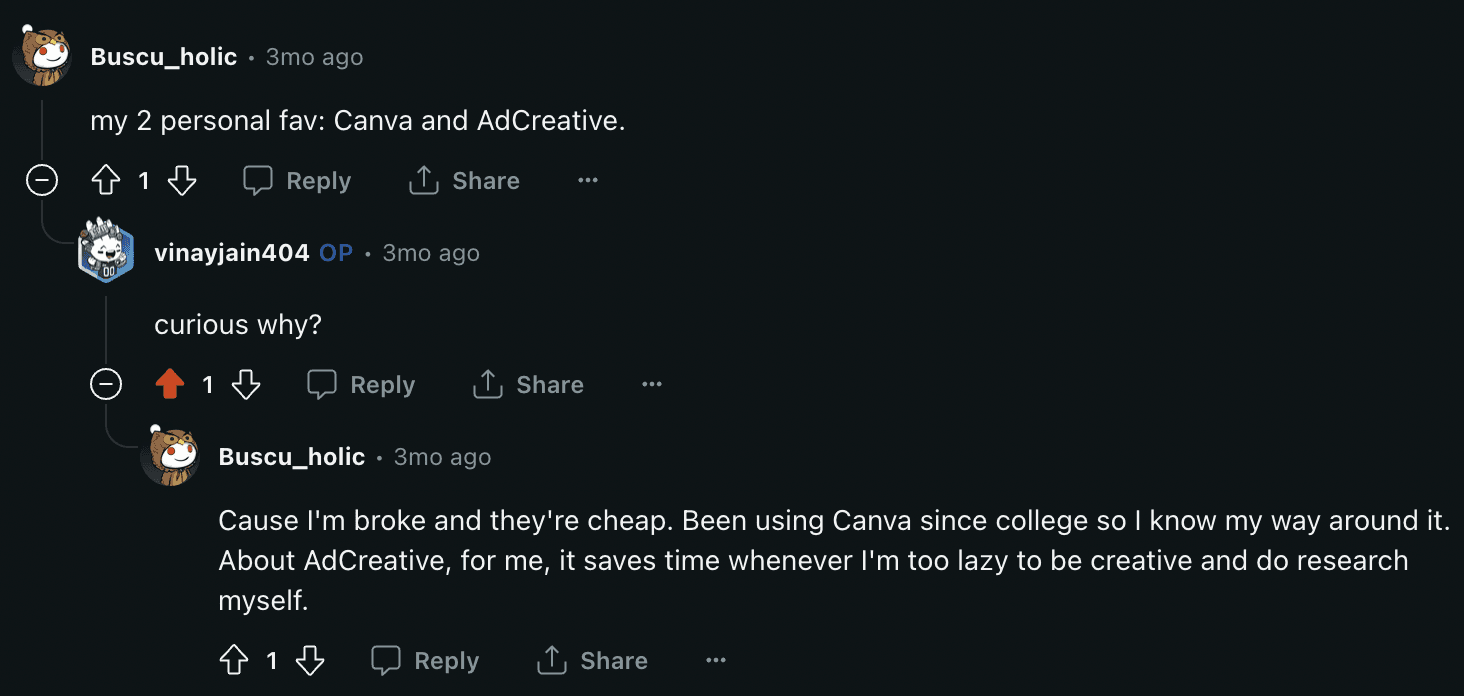
Are template ads a good fit for your SMB?
Different business have different needs and constraints. Even amongst SMBs, there are a diverse array of budgets, business objectives, and campaign requirements.
I distilled this wide range of needs and constraints into a simple quadrant graph that is segmented based on ad quality and frequency. Where do you see yourself on this graph?
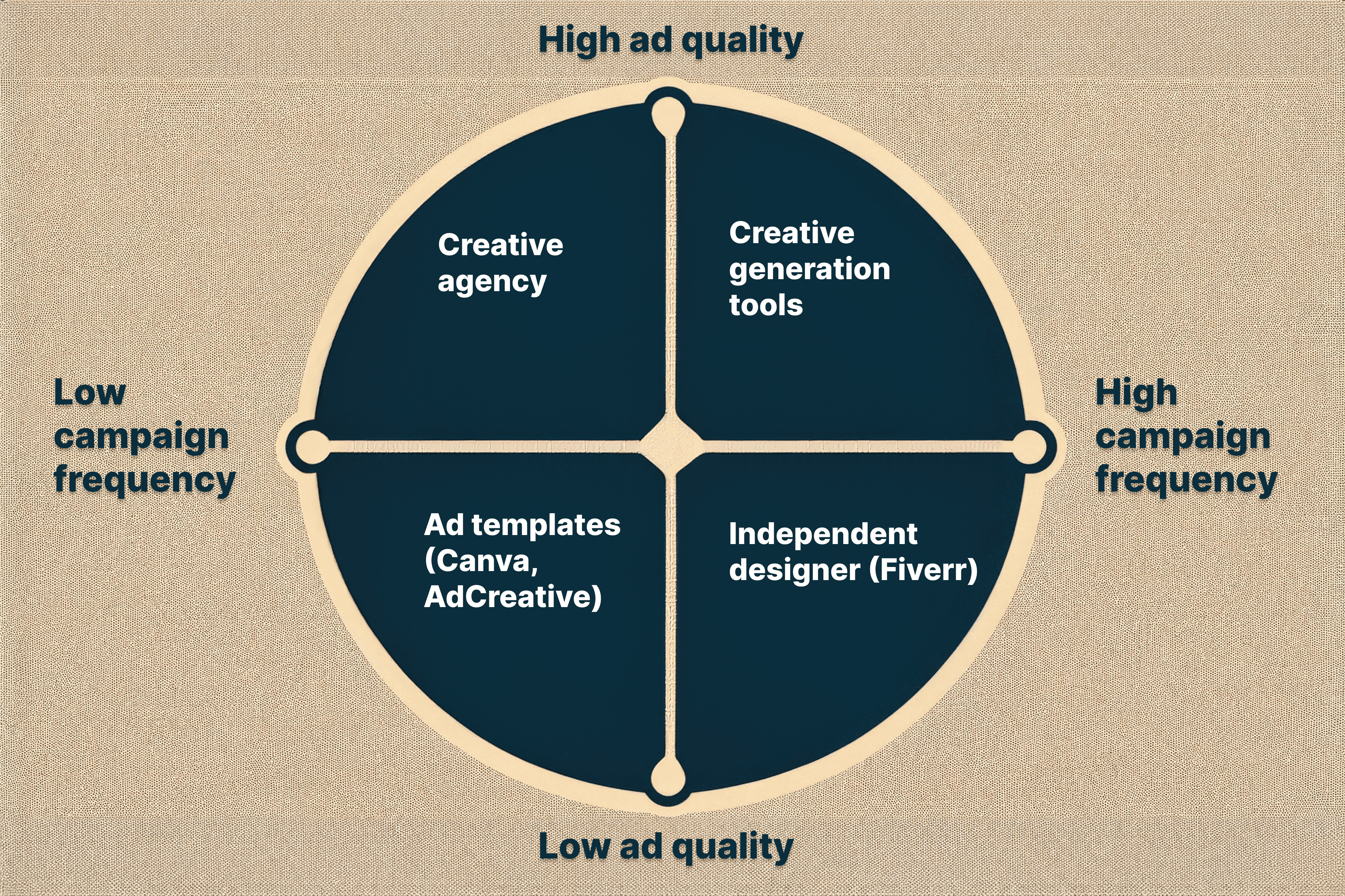
One-time launch: High budget, one-off campaigns are best served by creative agencies.
Lower quality, one-time campaigns: Ideal for template-based tools.
Continuous high spend: Suited for creative generation tools.
Frequent, low quality campaigns: Perfect for independent designers offering affordable solutions.
For most SMBs, the upper right quadrant is where they want to be. Constantly running high-quality ads that are continuously optimized for performance would deliver the best results.
But the ideals of “high quality ads” and “continuous ad campaigns” are not always feasible.
The roadblocks for SMBs using template-based ads
Despite the initial success of SMBs on platforms like Meta, the reliance on templates soon hits some roadblocks. These roadblocks can prevent businesses from getting to that ideal state with the ad campaigns.
These are the primary challenges I see in ad templates today.

Difficulty in iterating due to a lack of insights on what works
The overwhelming number of templates options to pick from
Ad fatigue from overused designs (read more about Facebook ad fatigue on our blog)
Lack of predictable and reliable performance
This all comes down to a single point: template-based ads can work, but make no mistake - they are a mediocre solution. You won’t get the best performance. You will likely have difficulty optimizing or iterating on your ads. And, you just can’t be sure your ad templates will return positive ROAS.
Without a clear path to understanding performance insights, and the inability to iterate on your ad creatives, SMBs typically run into higher ad campaign costs and lower profits. Best case scenario, lower profits can hamper your business growth. At worst, unprofitable ads will hurt the business outright.
Unfortunately, this is the current state of template-based ads. The good news is, generative AI tools are actively reshaping the workflows and performance of ad templates.
A future vision: AI-driven ad creative generation
The generative AI space is exciting for many reasons. One of those reasons is the breakneck pace of innovation and change that we are seeing today.
From our perch at Ads Generator AI, we see the potential for AI models to fix what is broken with template ads.
It was less than a year ago that Carvana launched their “Joyride” campaign, which used the power of AI to personalize videos for their customers at a massive scale. This was only possible with huge budgets and mature creative departments.
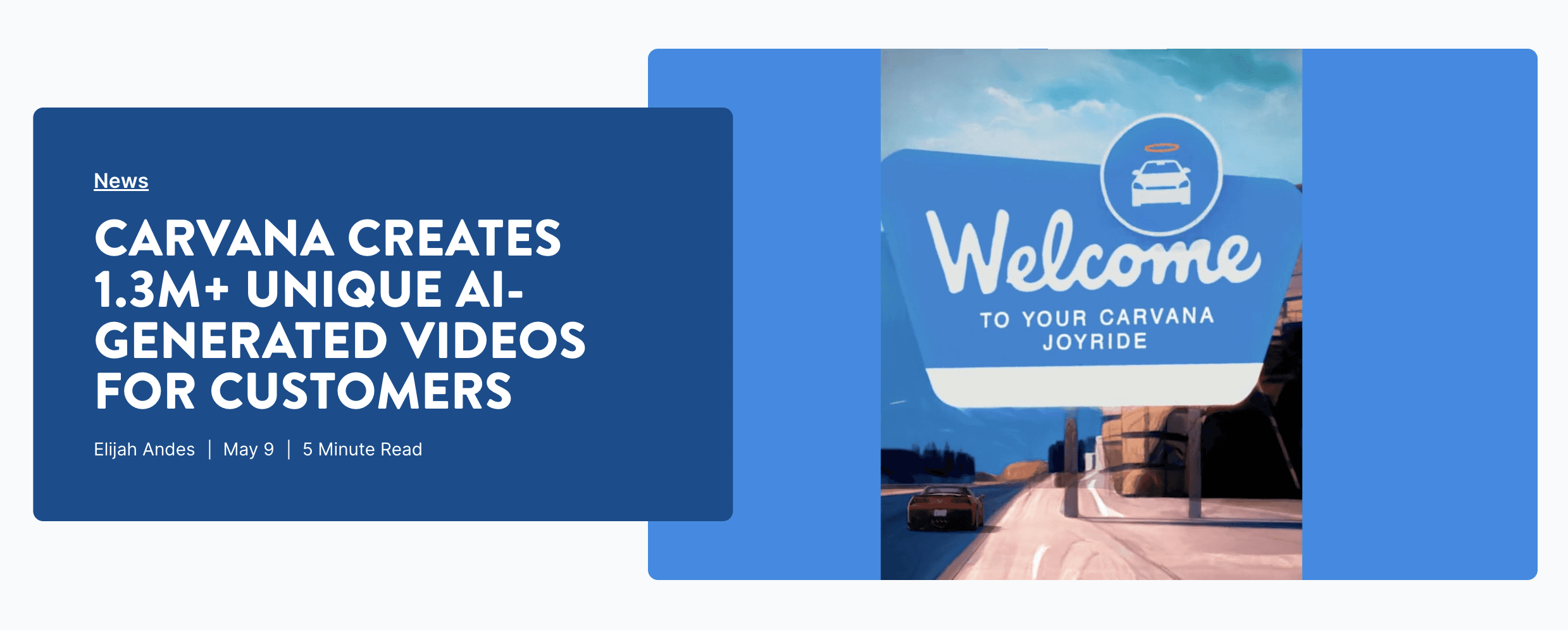
Soon, though, campaigns like this will be democratized and made accessible to even the smallest of SMBs.
Imagine combining the speed and cost-efficiency of tools like Canva with the ad quality from a creative agency and the iterative speed of an independent designer?
Generative AI tools are set to deliver on that dream. They make quick work of creative generation. They can analyze ad performance in real-time. They can even use perf insights to iterate the next batch of ad creatives. Best of all, they can pay for themselves through time-cost savings.
I can't wait to see where this AI-powered evolution of ad templates take us.
Can we work together?
There is nothing better than collaborating with like-minded builders and users.
Whether your a builder in this space, or a frustrated SMB owner in search of better ROAS, I would love to connect and chat with you. Feel free to reach out via the Ads Generator AI Twitter (I reply personally to all DMs)
Craft your winning ads